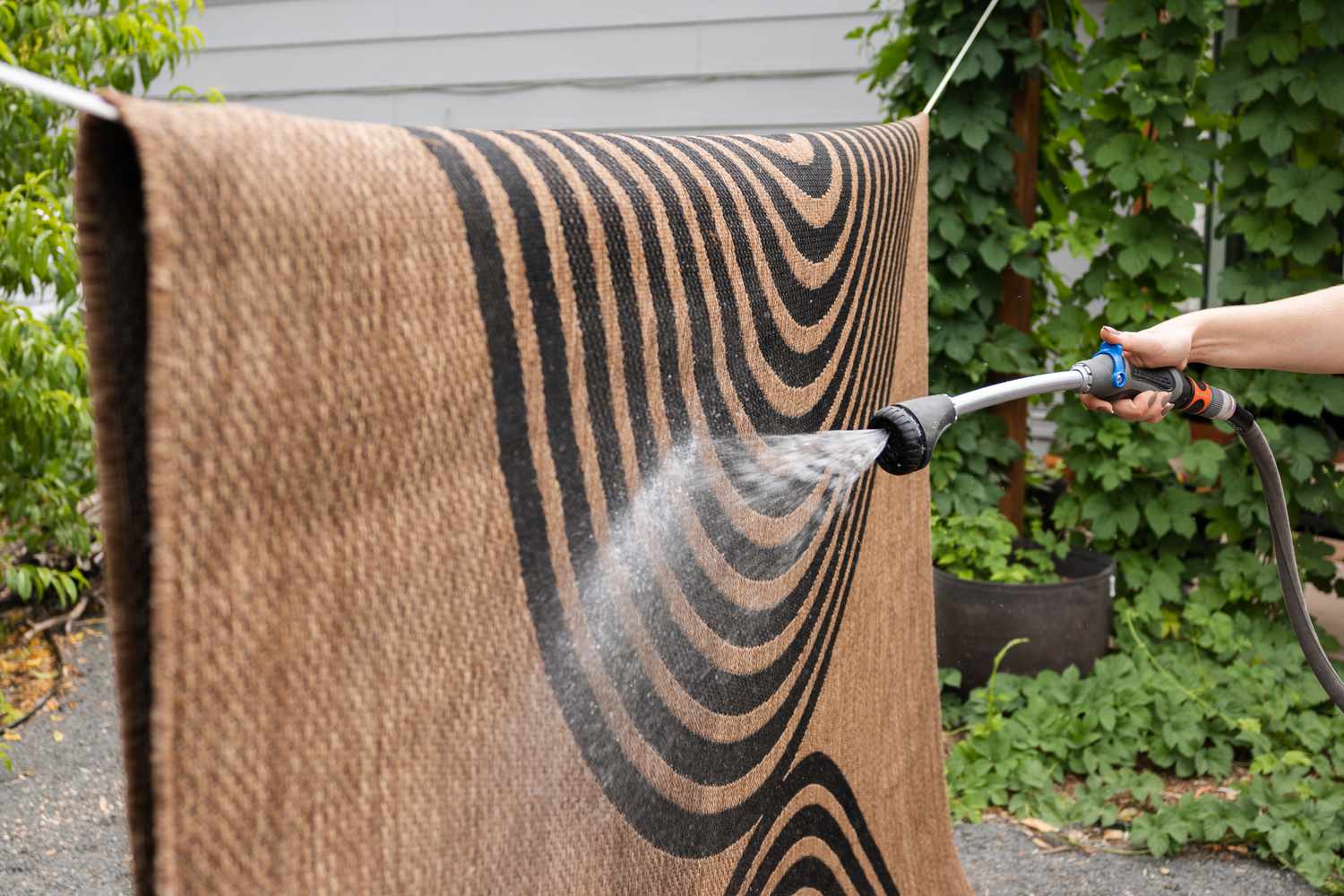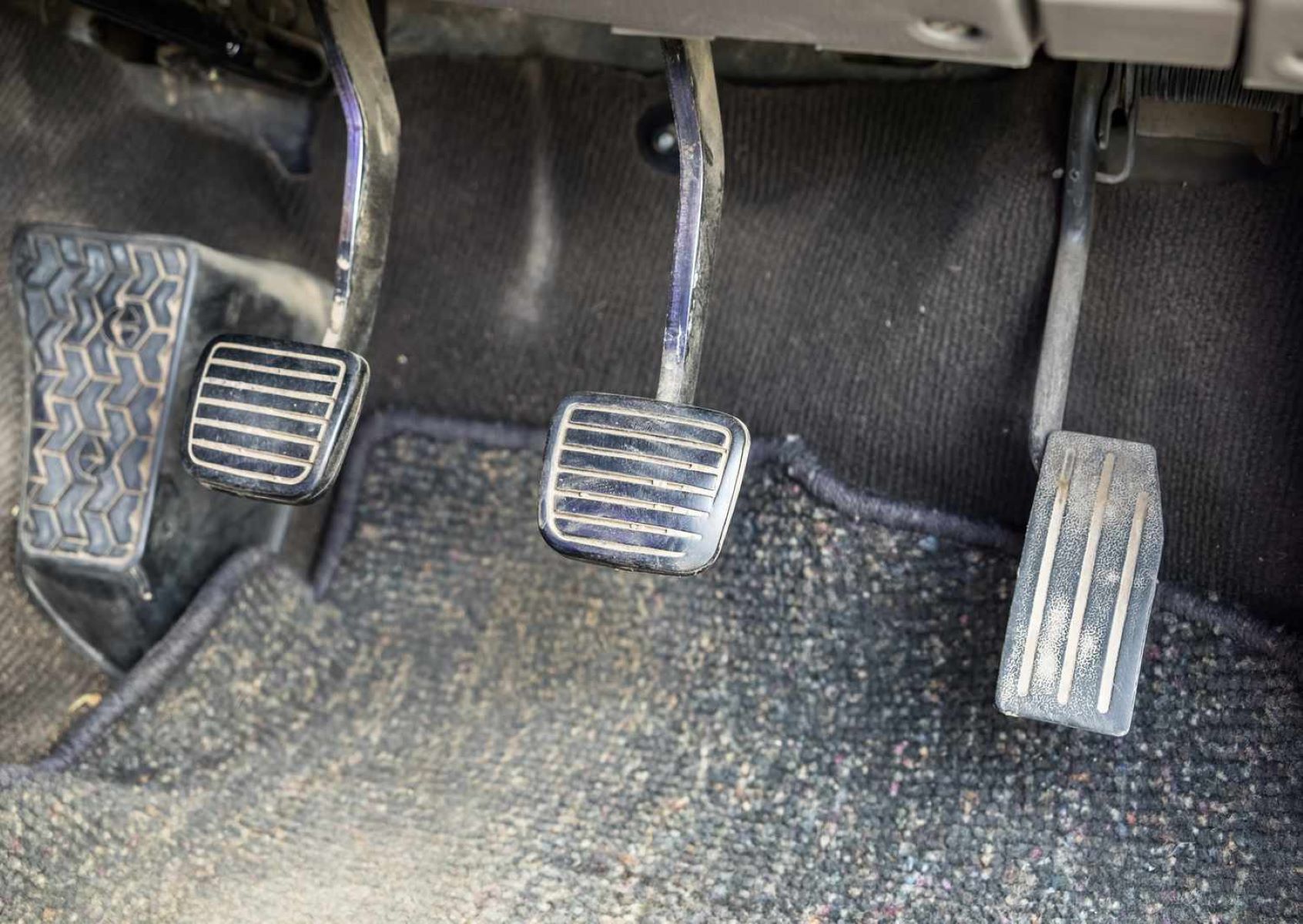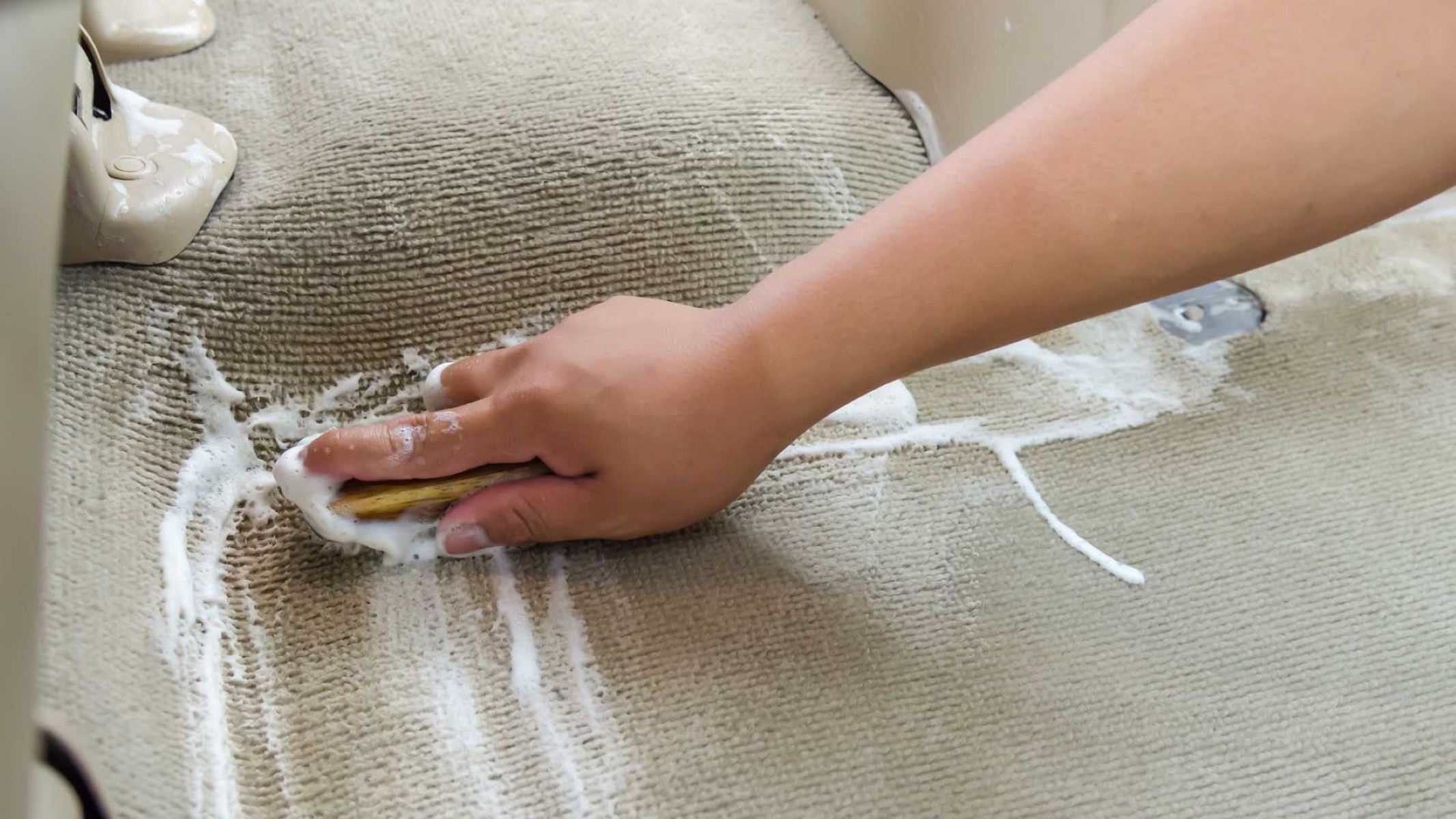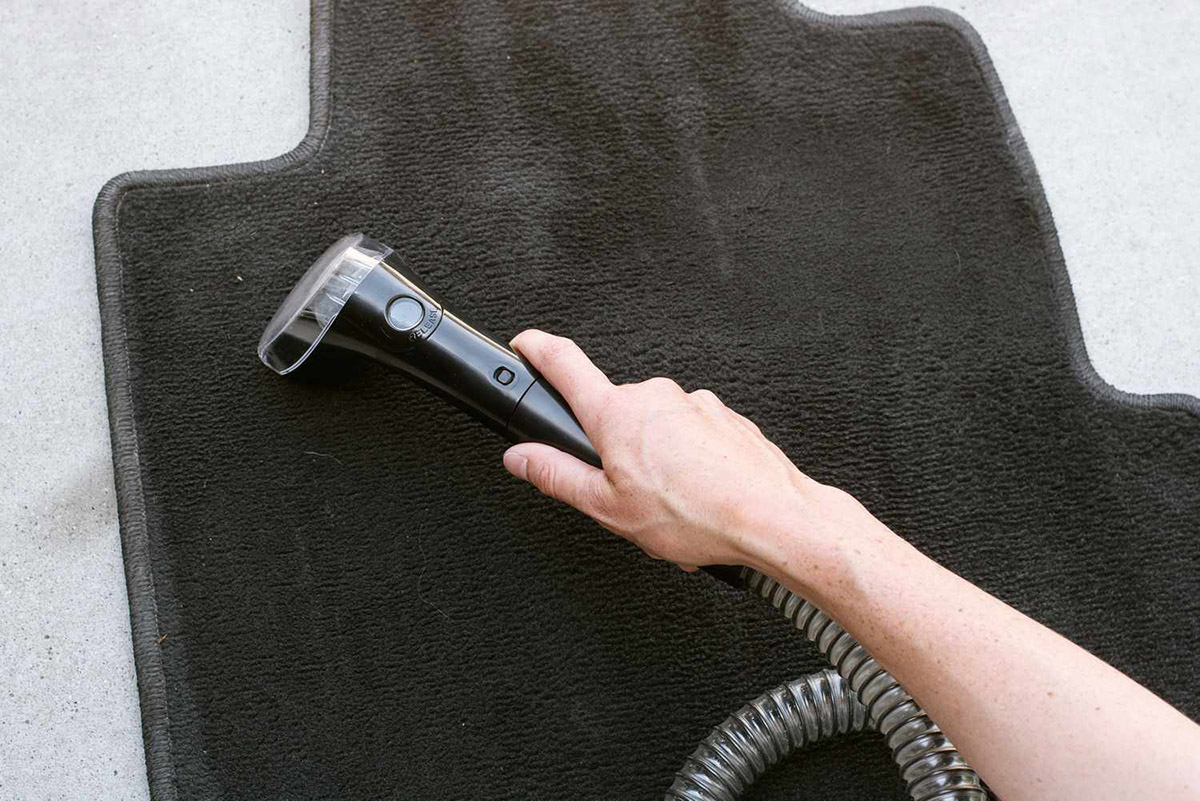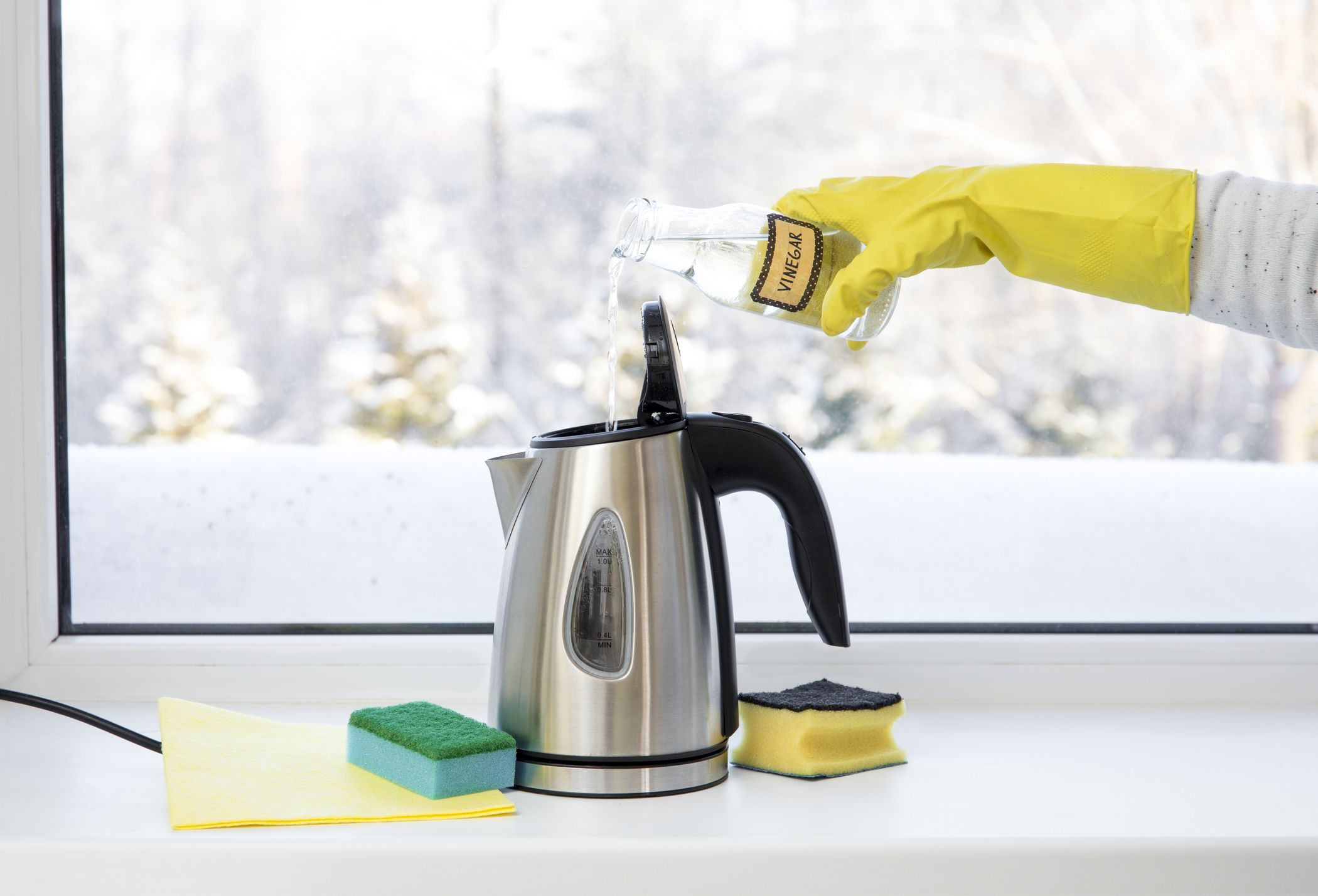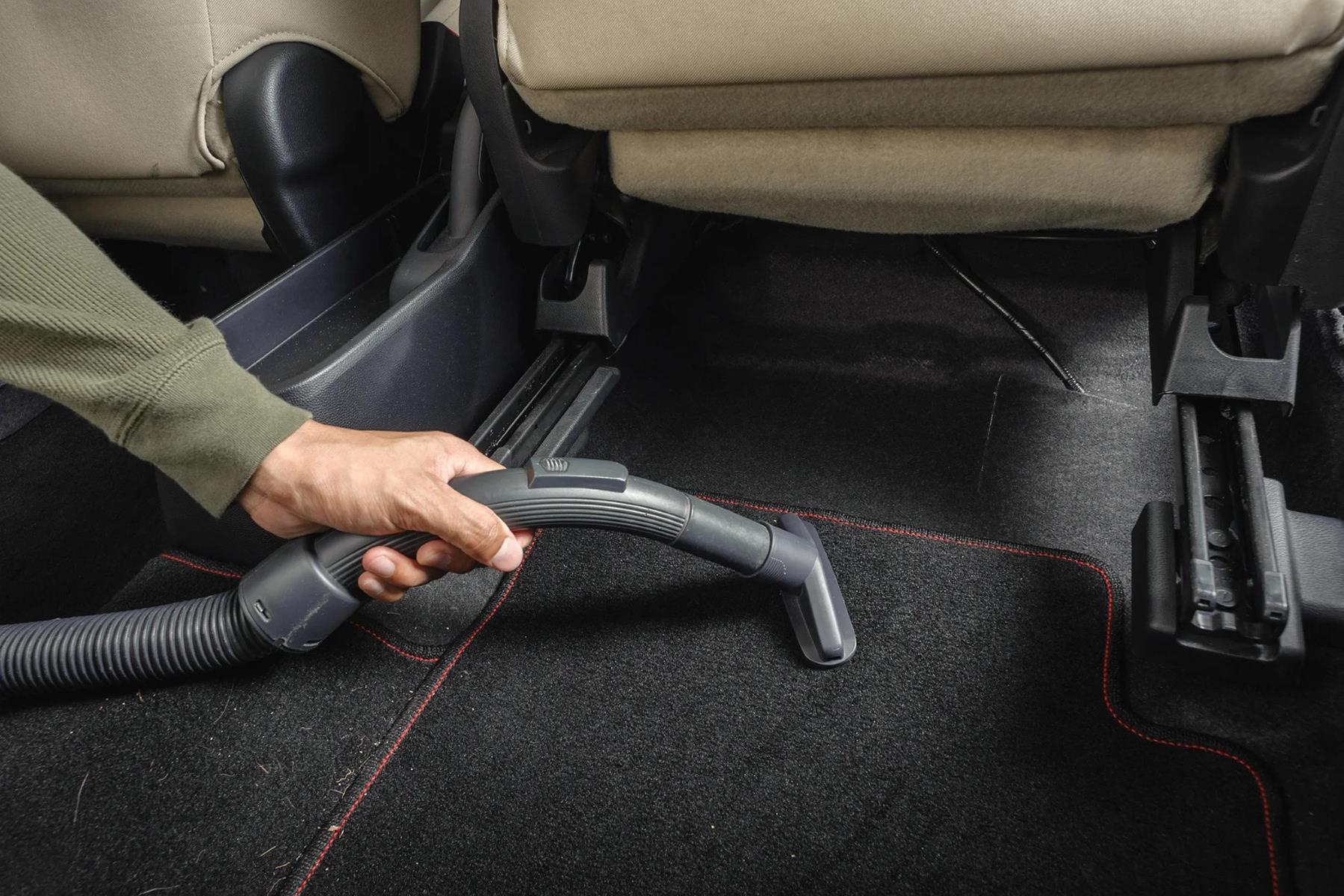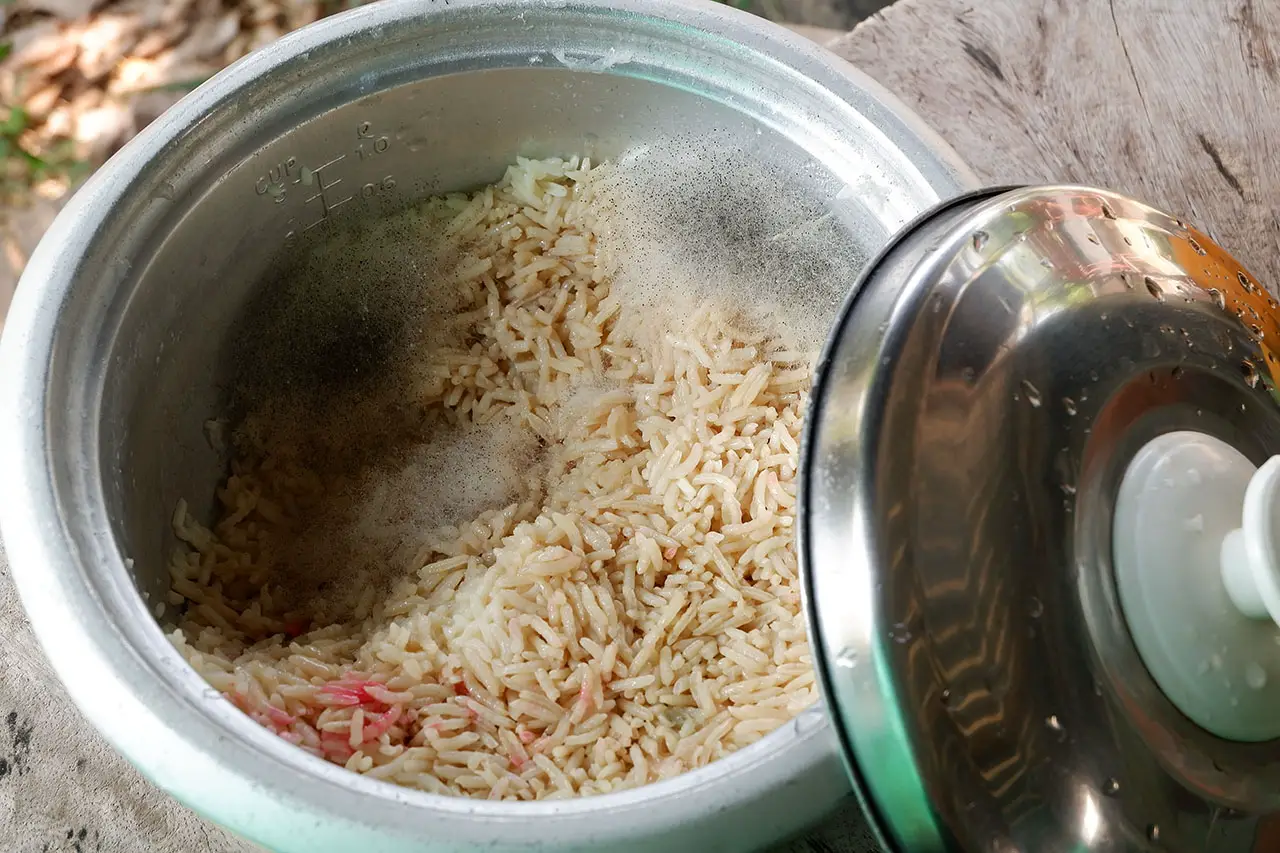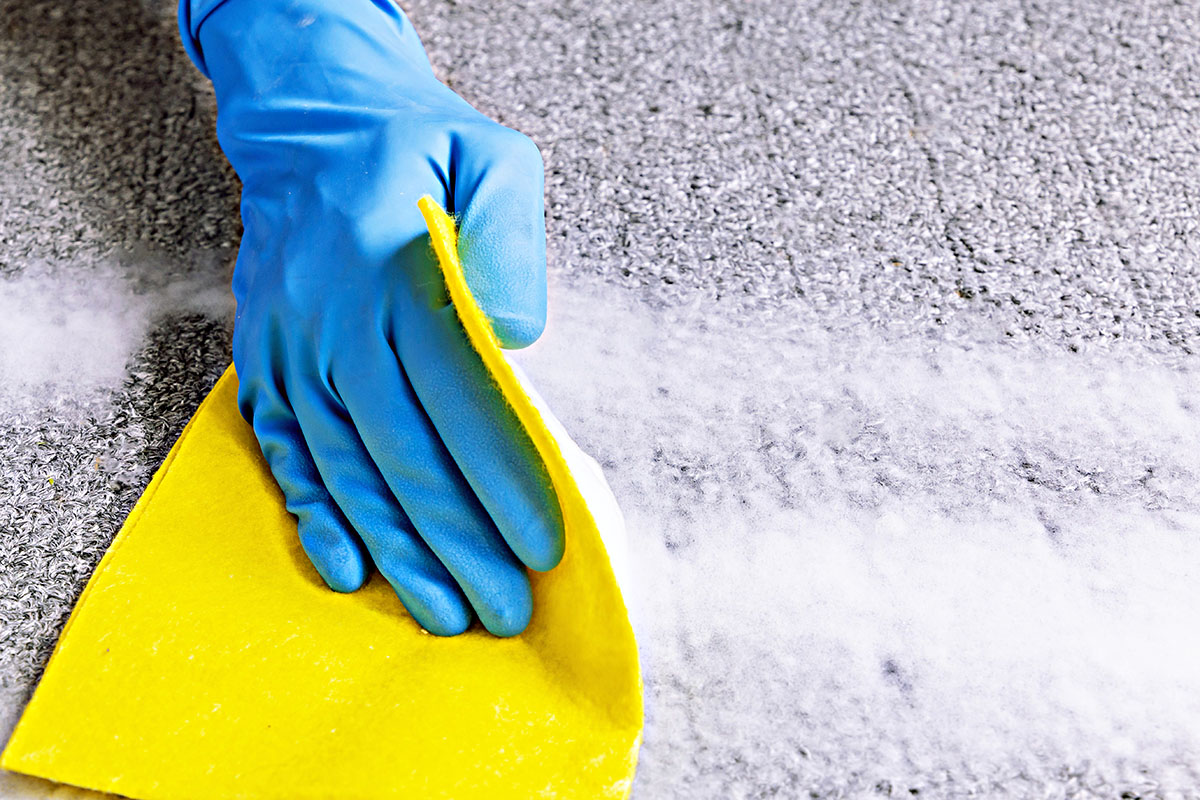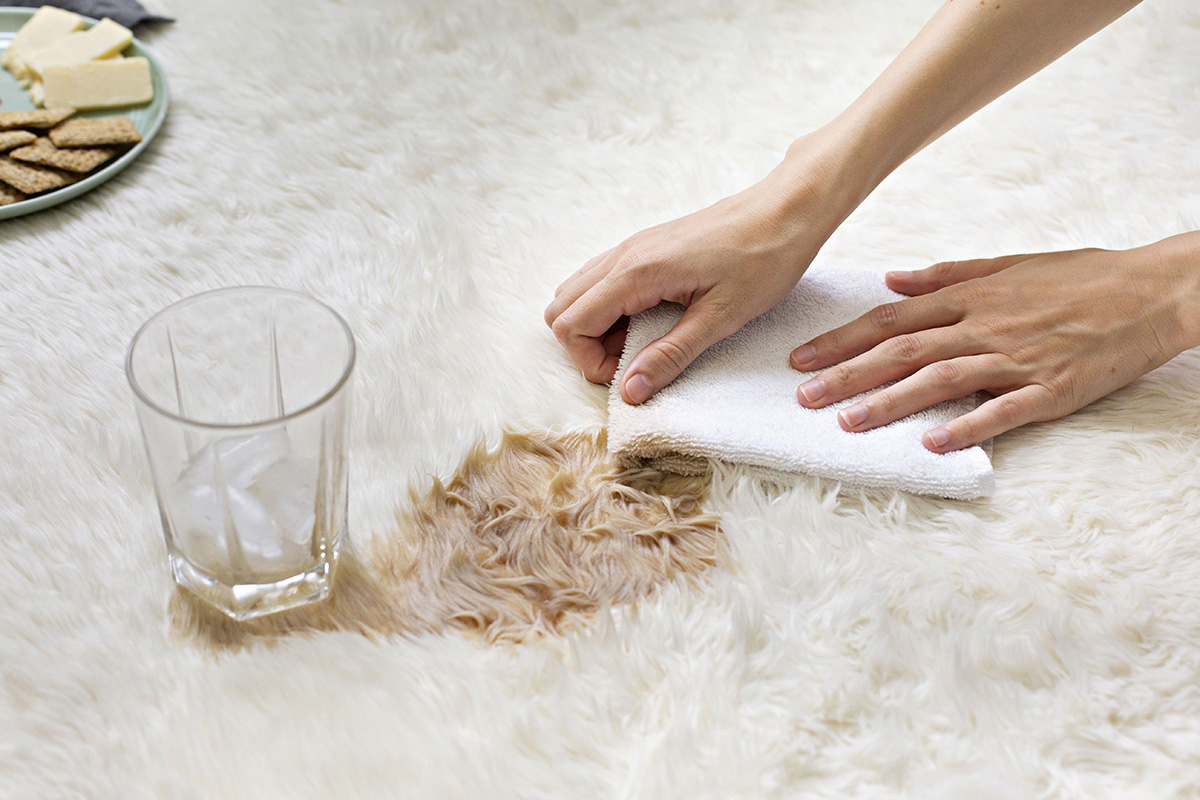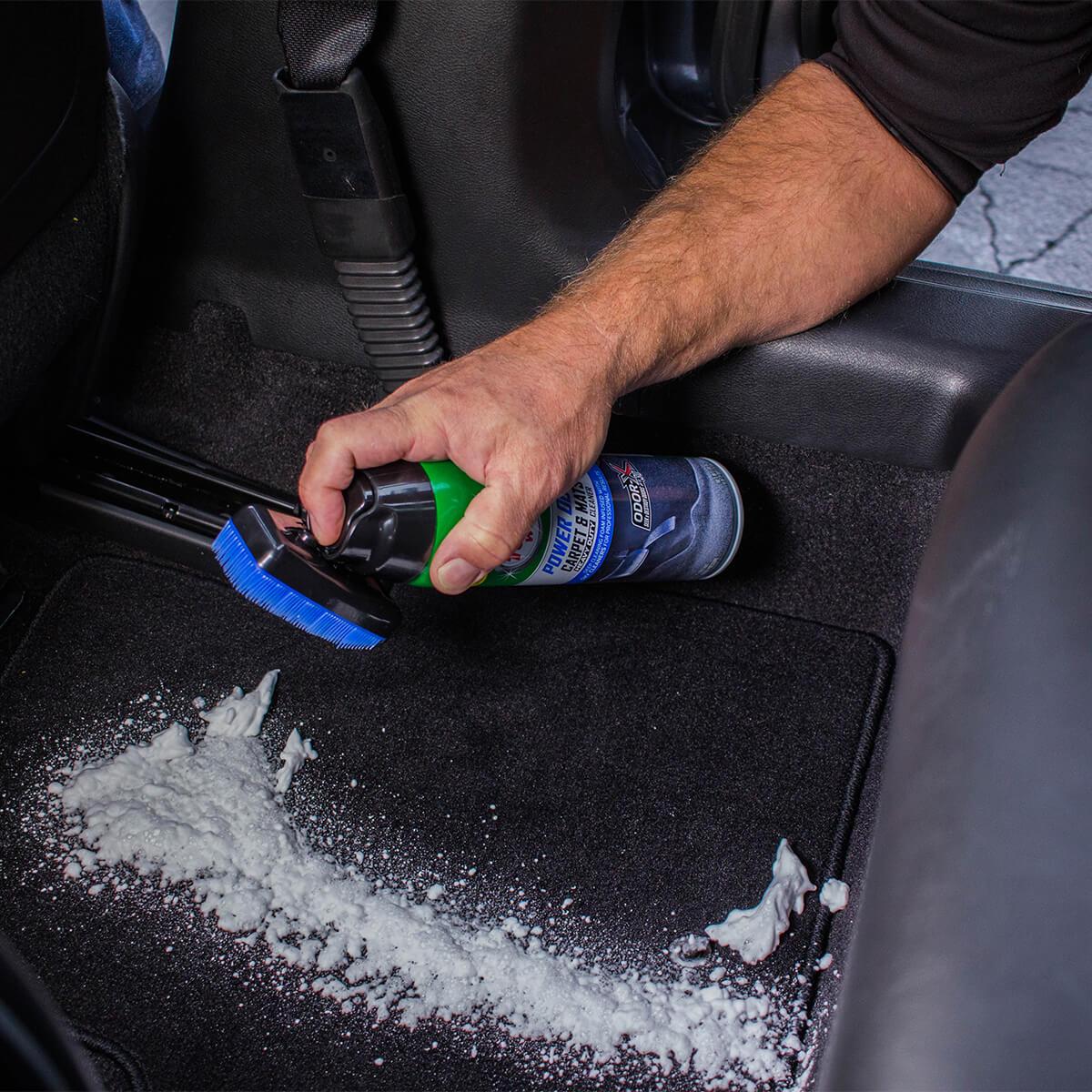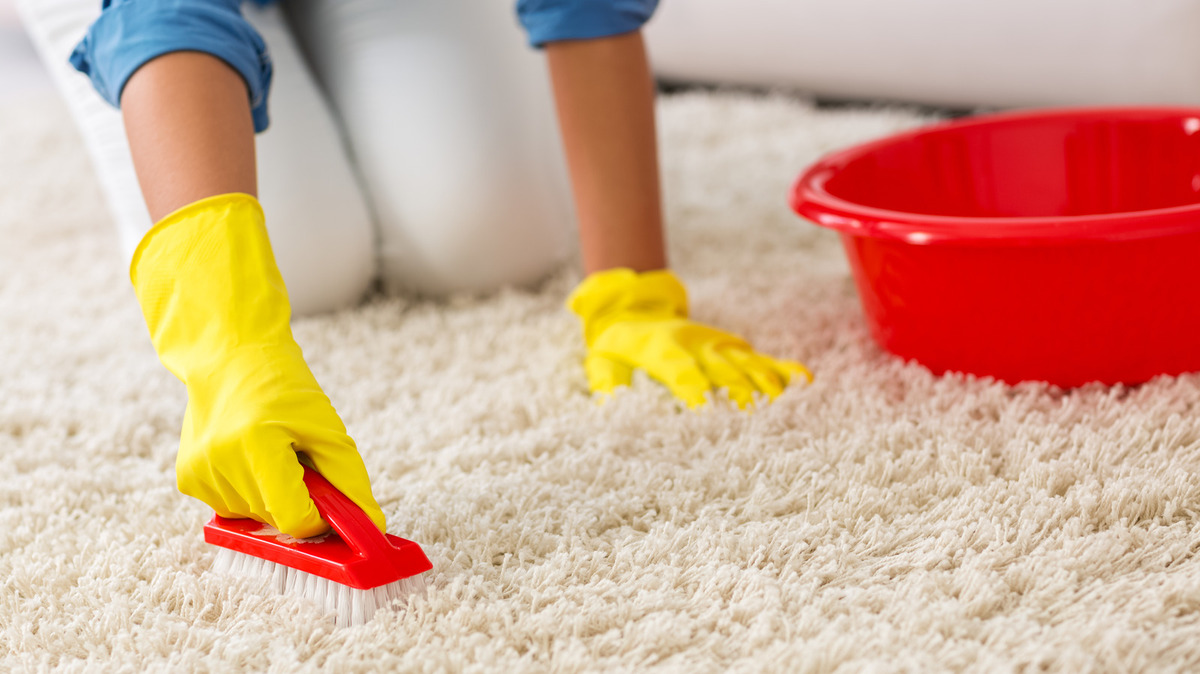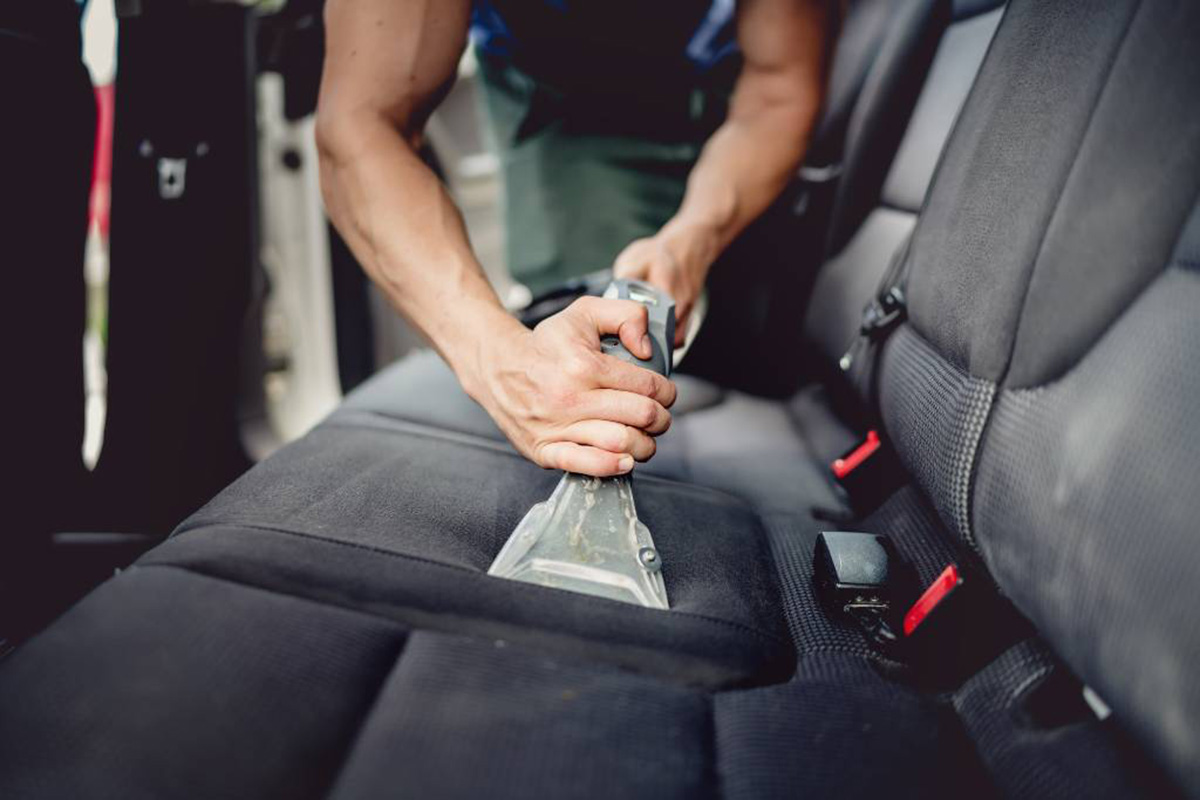

Articles
How To Clean Mold Out Of A Car Carpet
Published: December 7, 2023
Learn effective ways to clean mold out of your car carpet with these informative articles. Say goodbye to mold and enjoy a fresh and healthy car interior.
(Many of the links in this article redirect to a specific reviewed product. Your purchase of these products through affiliate links helps to generate commission for Storables.com, at no extra cost. Learn more)
Introduction
Welcome to our guide on how to clean mold out of a car carpet. Mold growth in your car’s carpet can be a frustrating and unpleasant problem to deal with. Not only is it unsightly, but it can also lead to potential health issues if left untreated. Mold thrives in moist environments, making your car’s carpet an ideal breeding ground, especially if it has been exposed to water damage or high humidity.
Removing mold from your car’s carpet requires a thorough cleaning process that targets both the visible mold spores and the hidden ones deeply embedded in the fibers. In this article, we will provide you with step-by-step instructions on how to effectively clean mold out of your car’s carpet, ensuring that your ride is not only fresh-smelling but also free from mold-causing allergens.
Before we dive into the cleaning process, it’s important to note that dealing with mold requires taking safety precautions to protect yourself from potential health risks. Mold spores can cause respiratory issues and allergies, so it’s crucial to wear protective gear, such as gloves, goggles, and a face mask, while cleaning. Additionally, make sure the car is parked in a well-ventilated area to avoid inhaling any mold spores during the cleaning process.
Now that we’ve covered the safety precautions, let’s move on to the steps involved in cleaning mold out of a car carpet, starting with the removal of loose debris.
Key Takeaways:
- Prioritize safety by wearing protective gear and working in a well-ventilated area when cleaning mold out of your car carpet. Thoroughly remove loose debris, prepare a cleaning solution, and apply it effectively to eliminate mold spores.
- After cleaning, ensure the car carpet is completely dry to prevent future mold growth. Vacuum and disinfect the area to maintain a hygienic environment, and address any water leaks or moisture issues to prevent mold outbreaks in the future.
Read more: How To Clean Carpet Mold
Safety Precautions
Before you begin the process of cleaning mold out of your car carpet, it’s essential to prioritize your safety. Mold can release spores that may cause respiratory issues and allergic reactions, so taking the necessary precautions is crucial. Here are some safety measures to keep in mind:
- Wear Protective Gear: Before starting the cleaning process, make sure to put on gloves, goggles, and a face mask to protect yourself from direct contact with mold spores.
- Work in a Well-Ventilated Area: Choose an open area with proper ventilation, such as a garage or an outdoor space, to prevent the inhalation of mold spores during the cleaning process.
- Keep Children and Pets Away: It’s advisable to keep children and pets away from the car during the cleaning process to avoid exposing them to potential health risks.
- Use EPA-Approved Cleaning Solutions: Ensure that the cleaning products you use are approved by the Environmental Protection Agency (EPA) for mold remediation. This ensures they are safe and effective for eliminating mold.
- Follow Product Instructions: Read and follow the instructions provided on the cleaning products carefully. This will ensure that you are using them correctly and minimizing any potential risks.
- Dispose of Contaminated Materials Properly: After cleaning, make sure to dispose of any materials used during the process, such as cleaning rags or brushes, in sealed bags to prevent the spread of mold spores.
By following these safety precautions, you can minimize the risk of exposure to mold spores and ensure a safe and effective cleaning process. Now that you are aware of the necessary safety measures, let’s move on to the first step: removing loose debris from the car carpet.
Step 1: Remove Loose Debris
Before diving into the deep cleaning process, it’s important to remove any loose debris from the car carpet. This includes dirt, leaves, crumbs, or any other visible particles that can be easily swept or vacuumed away. Here’s how to effectively remove loose debris from your car’s carpet:
- Vacuum the Carpet: Start by using a vacuum cleaner with a brush attachment to thoroughly vacuum the entire carpet. Move the vacuum in different directions to ensure that you reach all areas and remove as much loose debris as possible. Pay special attention to areas near the seats and floor mats where debris tends to accumulate.
- Use a Soft Bristle Brush: After vacuuming, take a soft-bristle brush and gently brush the carpet in the same direction as the carpet fibers. This will help to loosen any remaining particles that may be stuck between the fibers.
- Shake or Beat Floor Mats: If you have removable floor mats, take them out of the car and shake them vigorously to remove any loose dirt and debris. You can also beat them against a solid surface to dislodge any stubborn particles.
- Inspect and Spot Clean: Take a close look at the carpet for any specific areas that may require spot cleaning. If you notice stains or spills, use an appropriate carpet cleaner or a mixture of mild detergent and water to gently clean the affected area.
By starting with the removal of loose debris, you are preparing the car carpet for the deep cleaning process. This step helps to eliminate surface-level dirt and make the subsequent cleaning steps more effective. Once you have successfully removed the loose debris, you can move on to preparing the cleaning solution in step 2.
Step 2: Prepare the Cleaning Solution
After removing the loose debris from the car carpet, it’s time to prepare a cleaning solution that will effectively tackle the mold. Here’s how to prepare a DIY cleaning solution:
- Gather Your Supplies: Start by gathering the necessary supplies, including a bucket, warm water, white vinegar, and a mild detergent. White vinegar is a natural disinfectant that can help kill mold spores without the use of harsh chemicals.
- Mix the Cleaning Solution: Fill the bucket with warm water and add 1 cup of white vinegar. If the mold infestation is severe, you can increase the amount of vinegar slightly. Next, add a few drops of mild detergent to the mixture and stir it well to combine all the ingredients.
- Optional: Use a Commercial Mold Remover: If you prefer to use a commercial mold remover instead of a DIY solution, ensure that it is specifically designed for use on automotive carpets. Follow the instructions provided by the manufacturer for the proper dilution and usage.
Once your cleaning solution is prepared, you are ready to move on to the next step: applying the solution to the moldy areas of the car carpet. This step will help to eliminate any remnants of mold and prevent further growth. Keep reading to learn how to apply the cleaning solution effectively in step 3.
Step 3: Apply the Cleaning Solution
Now that you have prepared the cleaning solution, it’s time to apply it to the moldy areas of your car carpet. This step will help to break down and remove the mold spores embedded in the fibers. Here’s how to effectively apply the cleaning solution:
- Test in a Small, Hidden Area: Before applying the cleaning solution to the entire carpet, it’s a good idea to test it in a small, hidden area to ensure that it doesn’t cause any discoloration or damage to the carpet fibers. Choose an inconspicuous spot, such as under the seats, and apply a small amount of the solution. Wait for a few minutes and check for any adverse reactions.
- Dampen a Clean Cloth or Sponge: Dip a clean cloth or sponge into the cleaning solution, making sure it is thoroughly dampened but not dripping. Avoid using excessive amounts of liquid, as this can lead to saturation of the carpet and prolonged drying time.
- Blot the Moldy Areas: Gently blot the moldy areas of the carpet with the damp cloth or sponge. Avoid rubbing the affected areas vigorously, as this can spread the mold spores further. Instead, use a blotting motion to lift the mold off the surface of the carpet fibers.
- Repeat the Process: Depending on the severity of the mold infestation, you may need to repeat the application of the cleaning solution multiple times. Ensure that you are using a fresh cloth or sponge for each application to prevent recontamination.
By applying the cleaning solution to the moldy areas, you are actively targeting and eliminating the mold spores. The vinegar in the solution helps to kill the mold, while the detergent aids in lifting away any remaining dirt and debris. In the next step, we will address the scrubbing process, which will further help to remove mold and deep-seated stains from the car carpet.
To clean mold out of a car carpet, mix equal parts of water and white vinegar in a spray bottle. Spray the affected area, let it sit for 10 minutes, then scrub with a brush and wipe with a clean cloth. Repeat if necessary.
Read more: How To Clean Mold On A Carpet
Step 4: Scrub the Moldy Areas
After applying the cleaning solution to the moldy areas of the car carpet, it’s time to scrub and agitate the surface to further loosen and remove the mold. Scrubbing helps to penetrate the carpet fibers and ensure thorough cleaning. Here’s how to effectively scrub the moldy areas:
- Use a Soft-Bristle Brush: Select a soft-bristle brush that is suitable for use on automotive carpets. Avoid using abrasive materials or brushes with stiff bristles, as they can damage the carpet fibers.
- Dampen the Brush: Dip the brush into the cleaning solution to dampen its bristles. Ensure that it is not dripping wet to avoid saturating the carpet.
- Scrub in Circular Motions: Begin scrubbing the moldy areas using gentle circular motions. Focus on the affected spots, applying light to moderate pressure to dislodge the mold and lift it away from the carpet fibers. Continue scrubbing until you feel the mold breaking apart and loosening.
- Work in Small Sections: It is recommended to work in small sections at a time, ensuring that you cover the entire affected area. This allows for more precise and thorough cleaning.
- Rinse the Brush Frequently: As you scrub, rinse the brush frequently in clean water to remove any accumulated mold and debris. This prevents recontamination of the cleaned areas.
By scrubbing the moldy areas, you are physically agitating the carpet fibers and dislodging the mold. This step aids in the removal of deep-seated mold spores and stubborn stains. In the next step, we will discuss how to properly rinse the carpet to remove the cleaning solution and any remaining mold residue.
Step 5: Rinse the Carpet
After scrubbing the moldy areas of the car carpet, it’s important to thoroughly rinse the carpet to remove the cleaning solution and any remaining mold residue. Rinsing helps to ensure that no trace of the cleaning solution or mold is left behind. Here’s how to effectively rinse the carpet:
- Prepare Clean Water: Fill a bucket with clean, lukewarm water. Make sure the water is at a comfortable temperature for rinsing.
- Use a Clean, Damp Cloth: Take a clean cloth and dampen it with the clean water. You can also use a sponge or soft-bristle brush for rinsing.
- Gently Wipe the Carpet: Starting from the top, wipe the damp cloth or sponge across the surface of the carpet, moving in small, overlapping sections. Make sure to rinse thoroughly, ensuring that all the cleaning solution and mold residue are removed.
- Change the Water as Needed: If the water becomes dirty or cloudy during the rinsing process, empty the bucket and refill it with fresh water. Continuing to rinse with dirty water can potentially reintroduce mold or odors to the carpet.
- Repeat the Rinsing Process: Depending on the severity of the mold infestation and the effectiveness of the cleaning solution, you may need to repeat the rinsing process several times to ensure a thorough cleanse.
Rinsing the carpet is a crucial step in the cleaning process, as it removes any leftover cleaning solution and ensures that the carpet is free from mold residue. Once you have completed the rinsing process, it’s time to move on to step 6: drying the carpet to prevent the growth of mold.
Step 6: Dry the Carpet
After thoroughly rinsing the car carpet, it’s essential to properly dry it to prevent the growth of mold. Moisture is a key factor in mold development, so ensuring that the carpet is completely dry is crucial in preventing any future mold infestations. Here’s how to effectively dry your car carpet:
- Use Absorbent Towels: Start by using absorbent towels to soak up as much moisture as possible from the carpet. Lay the towels flat on the carpet and press down firmly to draw out the water. Repeat this process with dry towels until no more moisture is being absorbed.
- Open Doors and Windows: If weather conditions allow, open the car doors and windows to allow for proper airflow and ventilation. This will help expedite the drying process by allowing moisture to evaporate.
- Use Fans or Dehumidifiers: If necessary, use fans or dehumidifiers to further enhance airflow and speed up the drying process. Position the fans in such a way that they direct air towards the carpet, and set up dehumidifiers to absorb excess moisture from the air.
- Avoid Direct Heat: While it may be tempting to use heaters or direct sunlight to dry the carpet faster, it’s best to avoid direct heat sources. Excessive heat can cause the carpet to shrink or become damaged, so it’s important to allow for natural and controlled drying.
- Check for Remaining Moisture: After a few hours of drying, check the carpet for any remaining moisture. Press a clean, dry cloth onto the carpet to see if it comes away damp. If there is still moisture present, continue the drying process until the carpet is completely dry.
Drying the carpet thoroughly is a critical step to ensure the removal of all moisture and prevent any potential mold growth. Once the carpet is completely dry, you can proceed to the final step: vacuuming and disinfecting the area to complete the cleaning process.
Step 7: Vacuum and Disinfect
After the car carpet has dried completely, the final step is to vacuum and disinfect the area. This step helps to remove any remaining debris, dust, or mold spores that may have been missed during the cleaning process and ensures a thorough and hygienic result. Here’s how to effectively vacuum and disinfect the car carpet:
- Use a High-Powered Vacuum: Use a vacuum cleaner with strong suction power and a brush attachment specifically designed for use on carpets. This will help to pick up any remaining dust, debris, or loose mold spores from the carpet fibers.
- Vacuum in Different Directions: Move the vacuum cleaner in different directions, such as back and forth or side to side, to ensure that you cover the entire surface of the carpet. This helps to dislodge and remove any last traces of dirt or mold spores.
- Focus on Edges and Crevices: Pay extra attention to the edges and crevices of the carpet, as these areas tend to accumulate more debris. Use the vacuum’s crevice tool attachment to reach into tight spaces and ensure a thorough clean.
- Disinfect the Carpet: After vacuuming, it’s recommended to disinfect the car carpet to kill any remaining bacteria or mold spores. There are several disinfecting options available, such as commercial disinfectant sprays or a mixture of water and household disinfectant. Follow the instructions provided on the disinfectant product and apply it evenly to the carpet.
- Allow Sufficient Drying Time: Give the disinfectant enough time to work and allow the carpet to dry completely before using the vehicle again. This will ensure that the carpet is thoroughly disinfected and free from any potential contaminants.
Vacuuming and disinfecting the car carpet in the final step helps to ensure a clean and hygienic environment. By removing any remaining debris and disinfecting the surface, you minimize the risk of mold regrowth and maintain a fresh and odor-free car interior.
Following these steps to clean mold out of your car carpet will not only enhance the appearance of your vehicle but also contribute to a healthy and comfortable driving experience. Regular cleaning and maintenance can help prevent mold growth in the future and keep your car carpet in optimal condition.
Remember, it’s important to address any water leaks or moisture issues that may have caused the mold growth in the first place. By identifying and rectifying the source of moisture, you can prevent future mold outbreaks and maintain a clean and mold-free interior for your car.
Read more: How To Get Rid Of Mold On A Car Carpet
Conclusion
Cleaning mold out of a car carpet is not only essential for maintaining a visually appealing interior but also for ensuring a healthy and comfortable driving experience. Mold growth can lead to respiratory issues and allergies, so it’s crucial to tackle the problem promptly and effectively. By following the steps outlined in this guide, you can successfully remove mold from your car carpet and prevent its regrowth.
Remember to prioritize safety during the cleaning process by wearing protective gear and working in a well-ventilated area. Taking precautions will help minimize the risk of exposure to mold spores and ensure your well-being throughout the cleaning process.
Start by removing loose debris from the carpet, then prepare a cleaning solution using vinegar and mild detergent or opt for a commercial mold remover. Apply the solution to the moldy areas, scrub gently with a soft-bristle brush, and rinse the carpet thoroughly. Once the carpet is clean, dry it completely to prevent mold from returning. Finish by vacuuming the carpet and applying a disinfectant to kill any remaining bacteria or mold spores.
Regular maintenance and prevention are key to avoiding future mold growth. Address any water leaks or moisture issues that could contribute to mold development and keep your car interior dry and well-ventilated.
By following these steps and implementing proper preventive measures, you can maintain a clean, fresh-smelling, and mold-free car carpet, ensuring a pleasant driving experience for you and your passengers.
Frequently Asked Questions about How To Clean Mold Out Of A Car Carpet
Was this page helpful?
At Storables.com, we guarantee accurate and reliable information. Our content, validated by Expert Board Contributors, is crafted following stringent Editorial Policies. We're committed to providing you with well-researched, expert-backed insights for all your informational needs.
